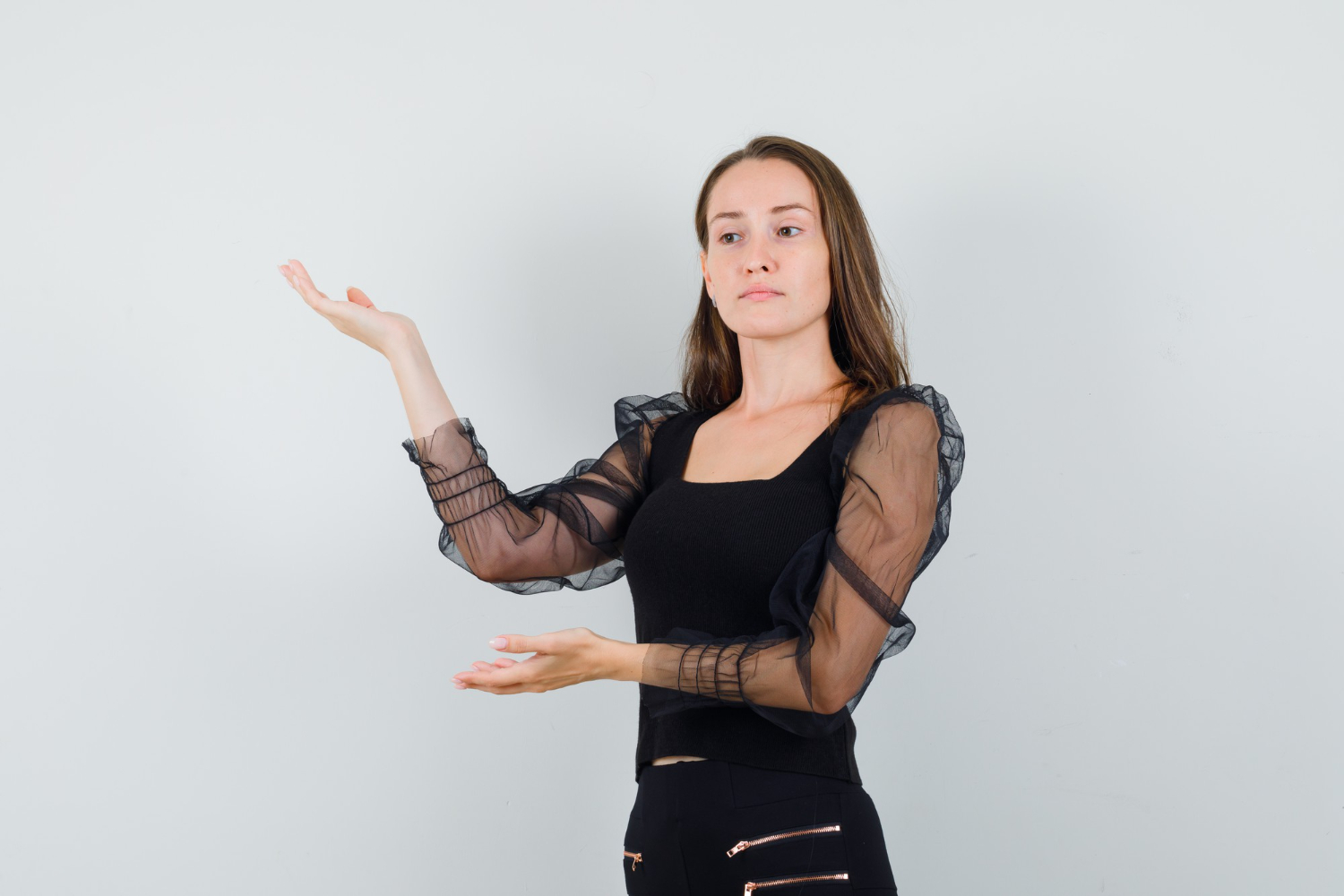Mastering body positioning is one of the most overlooked elements in modeling. While much attention goes into facial expressions and wardrobe, the subtleties of arm and hand placement can make or break a photo. I learned early on that awkward limbs or tense fingers can distract from an otherwise stunning image. That’s why refining your movements, especially the way you use your arms and hands, is crucial for looking poised and professional in front of the camera.
In this post, I’m going to break down everything I’ve picked up from castings, test shoots, and working alongside talented photographers and stylists. Whether you’re just starting out or aiming to elevate your modeling portfolio, these tips on arm and hand placement will make a visible difference in your work.
Relaxation Is Key
When my hands are tense, it shows. Fingers that look clenched, curled, or locked into place can create a rigid vibe, even if everything else in the pose looks flawless. One of the first things I remind myself before stepping into a shot is to shake out my hands and let the energy flow down my arms. I try to keep a slight bend in my elbows and always avoid locking my joints, it softens my whole body and helps my hands naturally fall into place.
A good mental trick is to imagine you’re holding a delicate object, like a flower or bubble. This visual helps guide my fingers into a gentle curve without forcing anything. Tension-free hands look more elegant and editorial, and they’re easier to position when you’re switching between shots quickly.
Create Angles That Flatter
I’ve noticed that photographers often look for interesting shapes within a frame. Arms can act like tools to create those shapes, diagonals, curves, or framing lines that enhance the silhouette. If I keep my arms too straight or flat against my body, I lose the opportunity to add visual interest. Instead, I try bending one elbow or placing a hand at my hip, shoulder, or waist. The slight bend introduces a new layer of movement that brings the composition to life.
Even a subtle tilt of the wrist can change the mood of a pose. When I want to convey strength, I tend to angle my elbow away from my body slightly and keep my hand firm. If the vibe is soft or romantic, I angle the wrist downward and let the fingers drift slightly apart.
Use Hands to Frame Your Face or Body
One of the most useful things I’ve learned is how to use my hands to guide attention. I often place one hand gently near my jawline, neck, or cheek to frame my face and draw the viewer’s eye there. But it’s important that my fingers don’t touch my face too heavily, light contact or hovering just above the skin keeps the effect natural and graceful.
Similarly, I’ll sometimes place my hands at my waist or along my torso to emphasize curves or elongate my frame. It works beautifully in both editorial and commercial shots. The key is avoiding full-on palms or rigid contact, which can feel too intentional or forced. I aim for light placement with curved fingers, as though I’m tracing the shape of my body rather than holding it.
Keep Hands Visible, But Not Distracting
I’ve been told on more than one occasion to show my hands. Tucking them completely behind my back or letting them disappear into pockets can interrupt the flow of a photo. Even in shots where the main focus is on my face or clothing, visible hands contribute to the energy of the pose.
That said, I never want my hands to steal focus. This is where I pay close attention to hand placement relative to the camera’s angle. If my hands are closer to the lens, they’ll look disproportionately large. I pull them slightly back, closer to my torso, or use them to guide the viewer’s eye instead of competing with other focal points in the frame.
Avoid the Claw or “Dead Hand” Look
One mistake I made repeatedly in early shoots was the dreaded “claw hand.” It happens when fingers are too spread out and tensed, making the hand resemble a claw. It’s not a good look, especially in beauty or close-up shots.
The opposite problem is what I call the “dead hand,” where the fingers droop lifelessly or hang with no intention. It can make an otherwise vibrant pose feel limp. The solution is subtle engagement. I imagine energy flowing all the way to my fingertips and give each finger a gentle curve. This adds life and elegance without overacting.
Consider the Mood of the Shoot
Every shoot has a tone, and I adjust my arm and hand movements to match it. For high fashion or dramatic editorials, I’m more experimental, I stretch my arms, create unusual angles, or use my hands to block part of my face in an artistic way. For lifestyle or beauty shoots, I keep things soft and minimal. Hands should never feel disconnected from the rest of the story being told.
Before I begin, I ask the photographer or creative director about the theme. Are we going for moody and mysterious? Then I might drape my arms loosely or let one hand cover part of my face. Is it bold and energetic? Then sharper angles and confident placement make more sense. Being in tune with the mood allows me to use my limbs purposefully instead of defaulting to awkward or static positions.
Practice in the Mirror or With a Phone
One of the best habits I’ve built is practicing poses in front of a mirror. I don’t just check how my face looks, I study how my arms and hands move through different positions. I take note of what angles make me look longer, more balanced, or more confident. I pay attention to how my hands rest naturally and how subtle changes affect the whole shot.
I also use my phone’s camera to record short practice sessions. This gives me a full-body view and helps me identify habits like fidgeting or stiff fingers. Over time, these observations have sharpened my posing instincts and helped me make real-time adjustments on set.
Match Your Arm Placement to the Outfit
Certain outfits call for specific arm and hand placements. If I’m wearing a dramatic gown with oversized sleeves, I use my arms to showcase the fabric’s movement. I might raise one arm or let the sleeve cascade as I turn slightly. If I’m modeling swimwear or lingerie, my arms and hands become part of how I shape and highlight my silhouette. I’ll place a hand at the small of my back, cradle an elbow, or touch my collarbone to convey intimacy and softness.
The fabric, fit, and texture all influence what I do with my arms. I always try to honor the garment and make it look its best. If I’m unsure, I ask the stylist or look at reference poses to get ideas that complement the design.
Use Props or Furniture to Anchor Your Pose
When I work with props like stools, chairs, or rails, my arms and hands become a bridge between me and the object. I lean slightly, drape one arm over the back of a chair, or rest my hand on a prop to create natural lines. These small touches add dimension and prevent my limbs from floating aimlessly.
I avoid gripping props too tightly unless the concept calls for it. A relaxed hand, even when interacting with an object, makes the pose feel candid and real. Props also help me experiment with balance, placing one hand on a railing while angling my hips or shifting my weight for visual asymmetry.
Don’t Forget About Symmetry and Balance
Even in dynamic poses, I try to keep a sense of balance. If one arm is extended outward, I let the other hang naturally or rest against my body. If both hands are in the frame, I stagger their placement to avoid mirror images. Symmetry can be powerful, but it can also feel rigid if not intentional.
Balance doesn’t mean uniformity, it means knowing how to distribute visual weight. I’m always thinking about how each limb contributes to the shape and tone of the shot. When I see the final image, I can tell if it “flows” or if something looks jarring. Practicing mindful placement is what gets me closer to that harmony.
Build Muscle Memory Through Repetition
At this point in my career, I don’t overthink every finger and forearm. That’s because I’ve practiced hundreds of poses and built up muscle memory. When I step onto a set, my body naturally falls into familiar positions that I know work. I can then tweak and adapt based on direction.
For new models, I recommend repeating poses and experimenting until it becomes second nature. Use Pinterest or magazines to collect pose references. Try them in front of the mirror, and notice how the arms and hands contribute to the shot’s emotion and composition. Over time, you’ll feel more confident moving fluidly between poses.
Final Thoughts
Arms and hands might not get the spotlight in a shoot, but they play a major supporting role in every successful image. They help communicate emotion, shape the composition, and direct the viewer’s gaze. With a little intention, your limbs can become expressive tools rather than stiff appendages.
When I step in front of a camera now, I pay as much attention to my hands as I do to my eyes or smile. It’s the details that elevate a photo from decent to unforgettable. So the next time you’re posing, let your hands tell a story, one that enhances your presence and brings the entire image to life.

